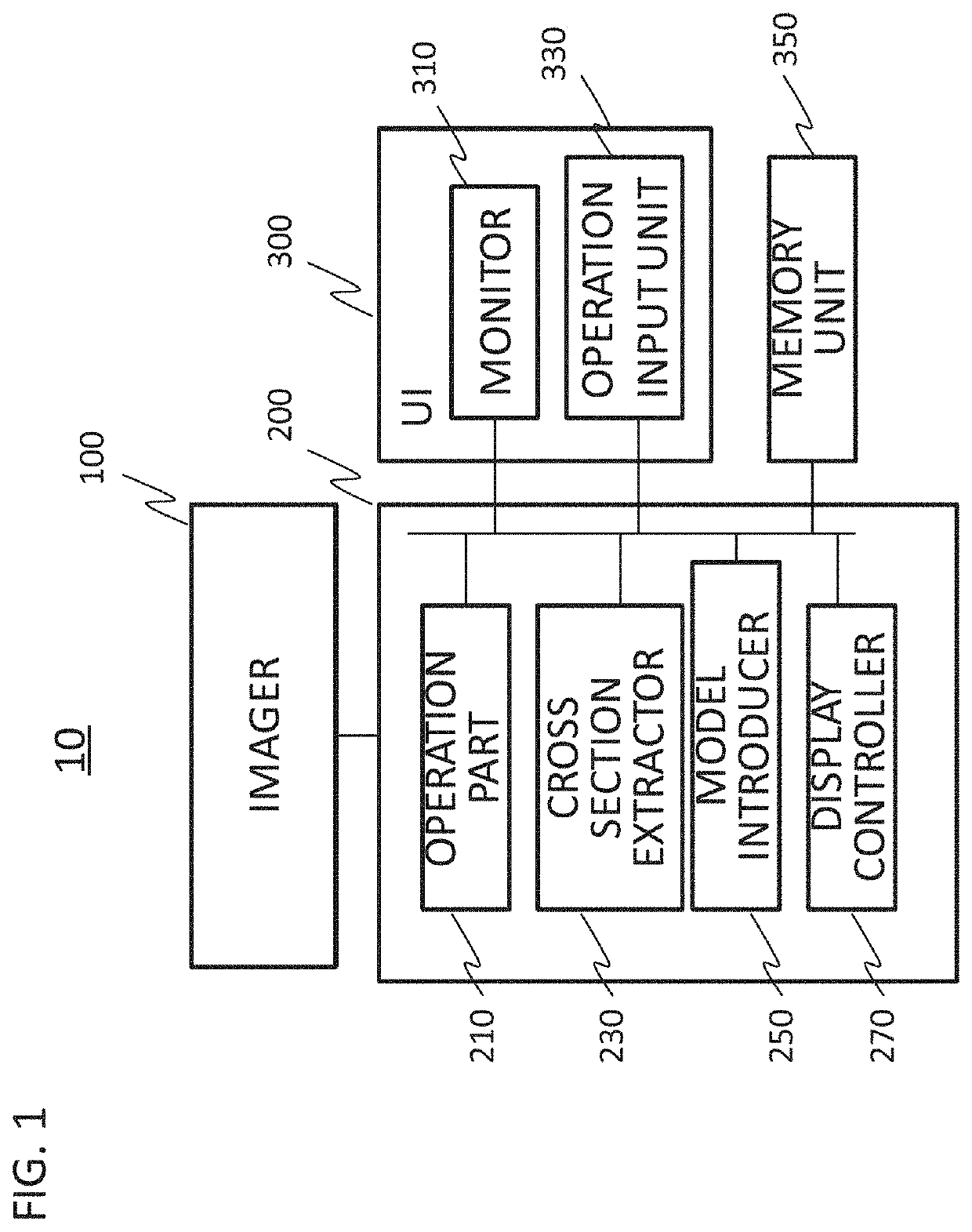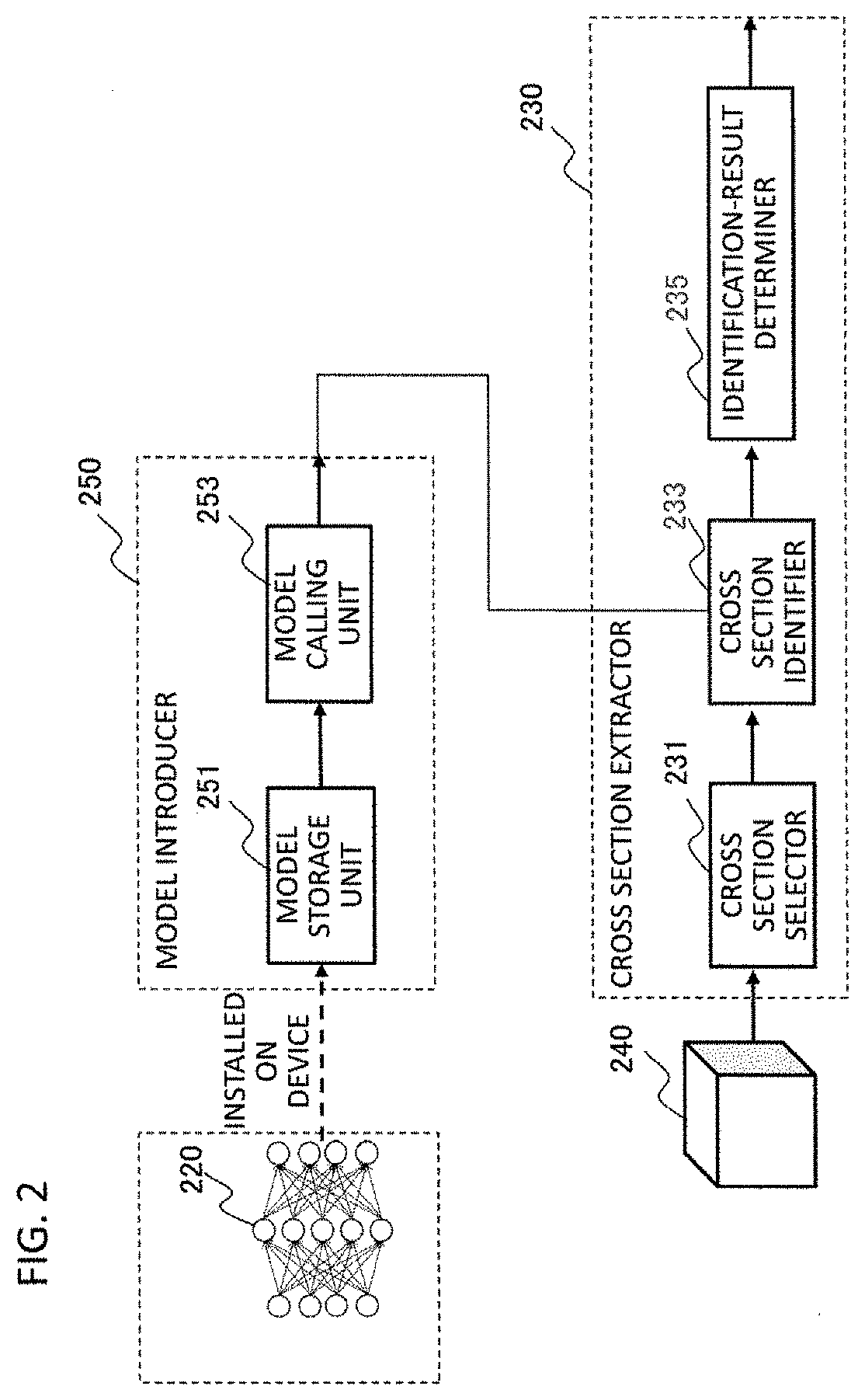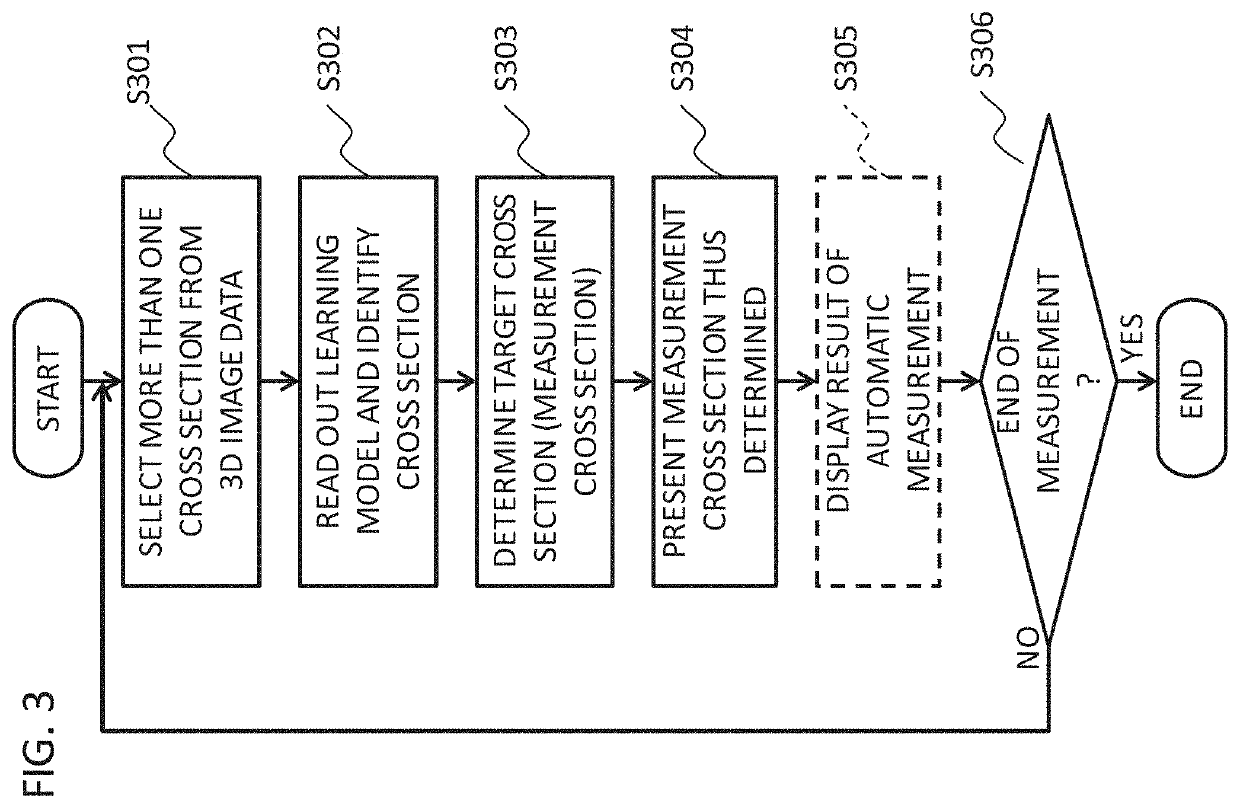Medical Imaging Device and Image Processing Method
a medical imaging and image processing technology, applied in the field of medical imaging devices, can solve the problems of requiring surface traces, time-consuming, and the step of selecting the measurement image after acquiring images takes the most time and effort, and achieves the effects of reducing manual operation dependence, high degree of precision, and reducing examination tim
- Summary
- Abstract
- Description
- Claims
- Application Information
AI Technical Summary
Benefits of technology
Problems solved by technology
Method used
Image
Examples
first embodiment
[0029]As shown FIG. 1, a medical imaging device 10 of the present embodiment is provided with an imager 100 configured to take an image of a subject and acquire image data, an image processor 200 configured to perform image processing on the image data acquired by the imager 100, a monitor 310 configured to display an image acquired by the imager 100 or an image processed by the image processor 200, and an operation input unit 330 for a user to enter commands and data necessary for the processing in the imager 100 and in the image processor 200. Typically, the monitor 310 is placed in proximity to the operation input unit 330, functioning as a user interface (UI) 300. The medical imaging device 10 may further be provided with a memory unit 350 for storing the image data obtained by the imager 100, data used in the processing by the image processor 200, and processing results thereof.
[0030]The imager 100 may be structured variously depending on modality. For the case of an MRI device...
second embodiment
Modification of Second Embodiment
[0087]In the aforementioned embodiments, there has been described the case where the volume data imaged in one-time examination for one patient is processed. The present embodiment is applicable to a group of 2D images taken in the examination at a previous time or in the examinations across the past several times. There will now be described the case where input data is 2D images that are temporally sequential.
[0088]FIG. 15 illustrates data acquisition and generation of a group of cross sections from data memory, when an extraction target is sequential 2D cross sections on temporal axis. In the present embodiment, a 1D probe is moved on the fetus 101 being an examination target, and temporally sequential 2D cross sections are accumulated in the data memory 472. Sampling of the cross section data 1501 called from the data memory 472 is performed on the temporal axis, and a target group of cross sections 1502 are generated. In other words, the search ...
PUM
 Login to View More
Login to View More Abstract
Description
Claims
Application Information
 Login to View More
Login to View More - R&D
- Intellectual Property
- Life Sciences
- Materials
- Tech Scout
- Unparalleled Data Quality
- Higher Quality Content
- 60% Fewer Hallucinations
Browse by: Latest US Patents, China's latest patents, Technical Efficacy Thesaurus, Application Domain, Technology Topic, Popular Technical Reports.
© 2025 PatSnap. All rights reserved.Legal|Privacy policy|Modern Slavery Act Transparency Statement|Sitemap|About US| Contact US: help@patsnap.com



